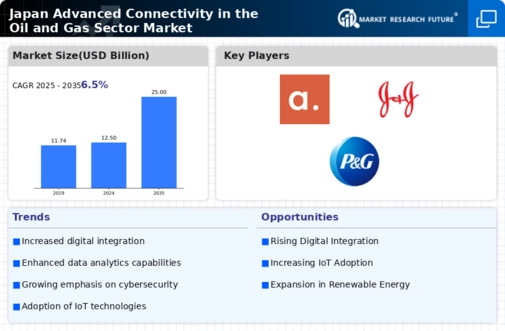The Japan Advanced Connectivity in the Oil and Gas Sector Market is poised for significant advancements driven largely by technological innovations and a push for increased efficiency in operations. The competitive landscape reflects a diverse array of companies leveraging cutting-edge technologies such as the Internet of Things (IoT), artificial intelligence (AI), and advanced data analytics.
These technologies play a crucial role in enhancing connectivity, allowing for real-time data transfer and improved decision-making processes. As the oil and gas industry evolves, it becomes imperative for companies to adopt advanced connectivity solutions to maintain competitive advantages, optimize their processes, and comply with regulatory standards.
The evolving demand for energy in Japan, combined with the ongoing transition towards sustainable practices, further shapes the competitive dynamics, encouraging companies to innovate and adapt.
Honeywell stands as a formidable player in the Japan Advanced Connectivity in the Oil and Gas Sector Market, leveraging its extensive portfolio of advanced technology solutions to optimize operations. The company is recognized for its innovative approach to digital transformation, offering products that enhance connectivity and operational efficiency within the oil and gas industry.
Honeywell's strengths lie in its integrated systems and software, which enable seamless communication between assets, workforce, and management. Its long-standing presence in Japan has allowed it to build robust relationships with key industry stakeholders, enhancing its ability to tailor solutions that meet the specific needs of the Japanese market.
By focusing on safety, efficiency, and digital transformation, Honeywell successfully positions itself as a leader in this competitive landscape, addressing the demand for advanced connectivity solutions.
Mitsui & Co plays a significant role in the Japan Advanced Connectivity in the Oil and Gas Sector Market by providing a variety of essential services and products focused on enhancing operational capabilities. The company's strengths include its extensive experience in resource management and its ability to secure strategic partnerships that augment its service offerings.
Mitsui & Co’s portfolio encompasses key products such as advanced control systems and integrated operational solutions designed to facilitate real-time monitoring and management in oil and gas operations.
This strong market presence is complemented by the company’s strategic mergers and acquisitions within Japan, enabling them to expand their technology base and market reach.
The company’s commitment to sustainability and innovation positions it prominently within the industry, allowing it to meet the growing demands for advanced connectivity solutions tailored to enhance productivity and efficiency in the oil and gas sector.














Leave a Comment